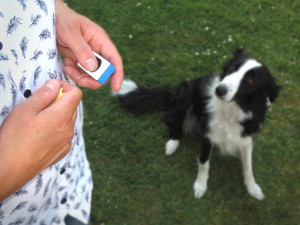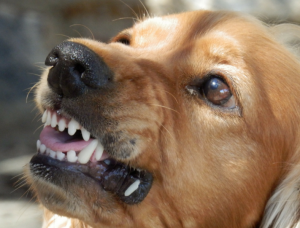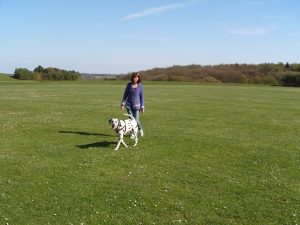The Role Of Classical Conditioning In Dog Training.
In the second of our Holidays4Dogs articles on classical conditioning, we focus on how to implement the method when training our dogs. We learned in the first part of the article that classical conditioning can occur naturally. However, it is widely used by animal behaviourists as part of training and socialisation. It really can be a game changer for many pet dogs and their owners.
Classical conditioning in dog training is a process whereby the dog learns by association. An example might be when you put on your shoes and pick up your dog’s lead. He learns to associate these stimuli with going for a walk. Therefore, classical conditioning is when the dog learns a stimuli that was not there before. To read more about this see the first part of our article on classical conditioning here.
Another example, is clicker training. Before you begin training you ‘charge’ the clicker, so that the dog learns to associate the sound, with the delivery of a food reward. More than this, though, the sound of the clicker creates the same emotional response in the dog, to the food itself. It’s really quite clever. And don’t forget the concept works with humans as well i.e. in advertising.
Classical conditioning focuses on how the animal is made to ‘feel’ rather than what the animal does.
There are many applications where classical conditioning can be a really powerful tool when training dogs;-
-
Conditioning the dog to markers.
When you first introduce your dog to the clicker you pair the sound of the click with food, so that very quickly the response to the noise of the clicker is the same emotional response he has to the food – which makes for an incredibly strong tool for teaching new behaviours.
If you pair treats with strange people, new environments etc, when your dog is a puppy, he is learning all the time that, whoever he is around, or where ever he might be, good things happen. Again, it’s a very good way to convince your dog, right from the start, that things needn’t be scary, or frightening.
This is known as ‘counter-conditioning’ and is a type of classical conditioning. By pairing food with something the dog finds worrying, you can often improve the way the dog ‘feels’ and help him to be less afraid.
Whether a dog is afraid, or aggressive towards a person or another dog, the aim is usually the same. He is attempting to make the other dog go away – either away from him, or from his food/toys/chews. However, if he knows treats will start flowing when another dog appears, the aggression/reactivity should reduce over time.
Using classical conditioning for dogs with fear issues.
First identify what it is your dog is reacting to. We call this the ‘trigger‘. Next get your hands on some REALLY tasty treats. You want something high value, such as cheese, cooked liver, or cooked chicken.
As soon as your dog sees the trigger – feed him treats – lots of treats! Aim for one every second, or two, as long as the trigger is in sight. Once the trigger has gone, stop feeding.
Try to keep your dog ‘under threshold’. This is the important bit. If your dog is scared of men in hats at 5 feet away, move 10 feet away.
Or, find the distance at which your dog is comfortable observing the man in a hat – without reacting.
Gradually, reduce the distance between the trigger and your dog. You can learn more about thresholds in dog training, in one of our other Holidays4Dogs training articles.
Still give treats – even if the dog is reacting (as long as he will take them). However, in this case you also need to move your dog further away as fast as you can. It doesn’t matter whether your dog is sitting, standing, walking etc.
Don’t forget, you’re not just showering him with treats. You are pairing the food with the trigger; – the good thing with the bad thing. You’re not teaching him an action, but attempting to change his emotional response. This is a very important difference.
The downside is classical conditioning isn’t necessarily a quick fix. If you are trying to change your dog’s response to a trigger, this might take weeks, or even months, before you see marked improvement. Therefore, try to be patient and consistent.
Conclusion.
Classical conditioning is an important tool when it comes to the behaviour and well-being of our four legged companions. By understanding how dogs ‘tick’, it can not only help the individual dog with issues or fears, it can also strengthen the bond between dog and owner.







